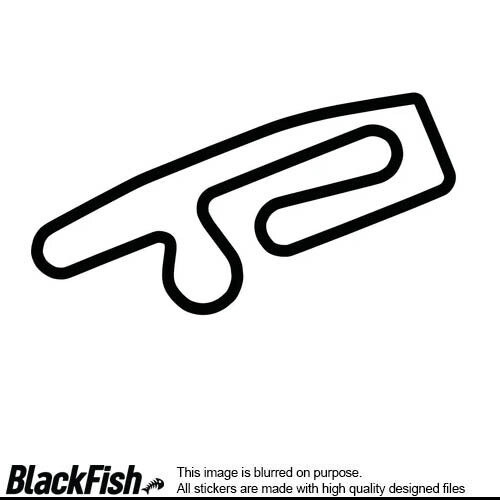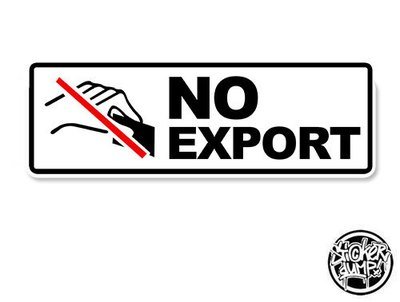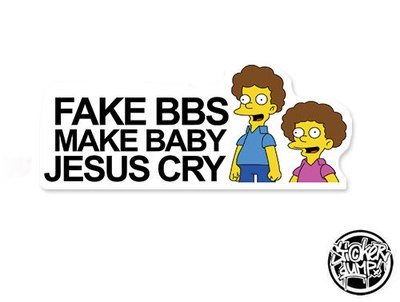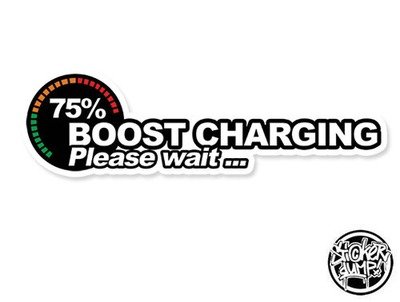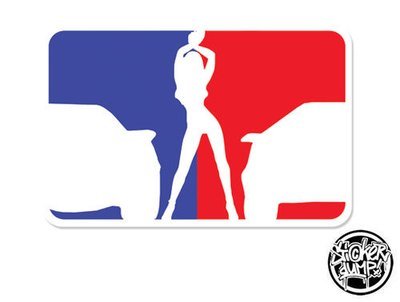If you like to know more about us, check our BlackFish website. Our workshop is located at the Nürburgring.
Need something custom made? Send us an email or give us a call.
Racetrack Europe Sweden Anderstorp
SWEDEN - Anderstorp - Gislaved Municipality
Anderstorps Motorbana, Nennesmovägen 20, 334 91 Anderstorp, Sweden
We produce stickers that makes your car or bike stands out in the stance, racing, dragrace, drift and/or international car show scene ! Over 16 years experience, special vinyls and unique designs. Looking for your own design, social media tag or communiy/club stickers? Contact us !
Follow our adventures around the world on Instagram.
Anderstorp is a curious blend of racing circuit and airfield runway, set in the middle of rural Sweden. Flat and fairly featureless, it nevertheless managed to attract the top levels of motorsport on two and four wheels in the 1970s.
Modest beginnings
The circuit had more modest ambitions, at least initially. In the summer of 1965, three racing drivers - Sven "Smokey" Åsberg, Åke Bengtsson and Bertil Sanell - met up at in Anderstorp for their usual morning coffee. All three raced for the local Team Mosarp racing outfit and discussion turned to how they could get an advantage over their rivals. Åsberg had previously suggested building a modest 1.5km test track to allow them to hone setups and had done some preliminary calculations as to potential costs.
"It's too expensive," he reported. "Instead we must build a great track four kilometres long on Stötabomossen." After several guffaws from his compatriots, Åsberg confirmed this would require much more financing but this might not be the problem it seemed. "We won't have to pay for it if we convince the industrialists in the village to so instead."Ever the entrepreneur, Åsberg set about convincing local business owners to provide finance to the circuit. Key to the plans was the inclusion of an air strip which would open up new commercial prospects for the isolated town thanks to a daily connection to Stockholm. Enough business leaders were on board by 1966 to allow construction to begin.The course was designed by engineer Holger Eriksson, with advice from Formula 1 driver Joakim Bonnier. Dominated by the long back straight which doubled as the airfield runway, the rest of the course was fairly twisty and technical. A key feature were long constant radius corners which were slightly banked, which meant finding a good setup was difficult but crucial to fast lap times. Unusually, the pits were separated from the start/finish line as the straight on which they were sat was too short to meet competition rules, meaning competitors effectively did another half lap at the beginning of each race.
Circuit opens
The circuit was officially inaugurated as the Scandinavian Raceway in June 1968 with an international sportscar race, won by Bonnier, though in reality the first race was actually a month earlier and held in secret in order to provide a test run for the newly formed Anderstorp Racing Club. Following the inauguration, Åsberg dropped a major bombshell with the declaration that the new raceway would seek to host a Formula One race within five years.
Just as when he announced his plans for the circuit to his friends, Åsberg was faced with a fair amount of incredulity but this did little to deter him. First, a F5000 race was organised in 1970 and then top class motorsport actually arrived by 1971, with the debut of the World Motorcycle Championships. Giacomo Agostini won the first 500cc race for MV Agusta, en route to the world title.
Minor modifications to the pit lane entry were made in 1972, moving it further towards the Karusell turn and providing greater run off at the entry to the Gislaved corner. During the summer, Åsberg travelled to the Belgian Grand Prix to meet representatives of FISA to hammer out the terms of a Formula One race. He returned to Sweden with a contract to host the inaugural Swedish F1 GP in 1973, thus fulfilling his promise. Puffing on his trademark giant cigar, 'Smokey' certainly had the last laugh...
Formula One arrives
The arrival of Formula One coincided with the rise to prominence of Swedish ace Ronnie Peterson and the local fans nearly got a dream debut race. They packed into the facility in droves to watch Peterson take the lead from Lotus team mate Fittipaldi at the start. He was never headed until, cruelly, fate intervened and a slow puncture in the closing stages allowed Denny Hulme to sweep by to victory in a McLaren.
A year later, it was Jody Scheckter's turn to win his first race for Tyrrell and, after Niki Lauda won for Ferrari in 1975, a run of unexpected victors emerged. Scheckter took the spoils in '76, earning the six-wheeled Tyrell P34 its only win, before Jaques Laffite surprised in '77 with a win for Ligier. Stranger still was to come in '78, when Niki Lauda's controversial Brabham-Alfa fan car blew a hole through the regulations and its rivals to score an emphatic win.
Sadly for the home crowd, Peterson and emerging star Gunnar Nilsson never tasted victory in their home event and by 1979 both were dead; Peterson killed at Monza and Nilsson succumbing to cancer. The F1 race died with them as corporate Sweden lost interest in supporting an event with no home stars.
The Motorcycle Grand Prix had also briefly departed to Karlskoga in 1977 and '78, but by 1980 Anderstorp assumed it place on the FIM calendar. While its true to say many riders never fully warmed to the place – a running joke was that the best part of the track was the runway as it meant you could make a quick exit after the race – it did become a staple of the calendar, hosting events until 1990.
In the mid-80s, the entry of Volvo into the European Touring Car Championships made Anderstorp a logical choice for a race. It proved a successful move, with Volvo cars winning in both 1985 and '86. Anderstorp remained on the calendar as the series morphed into the World Touring Car Championship in 1987, though this time victory fell to BMW.
Into the 1990s
By 1990, it was clear that the circuit required modernisation. The FIM demanded changes if the World Championship was to return, and while these were duly complied with, it was a round of the World Superbikes that continued two wheel competition in 1991. No major races were held in 1992, but the circuit looked set to bounce back the following year with a round of the World Endurance Championship (a 24 hour race) and the return of the World Superbikes.
In the end, 1993 proved a pivotal year. All appeared well until the week of the 24 hours, when a complaint over noise nuisance put the event in doubt. Even as teams were arriving in Sweden off the ferry the media was reporting the race was cancelled, but a last minute intervention by the state governor gained the race a reprieve. Torrential rains for the whole of the race helped little and in the most trying of circumstances, it was testament to the circuit and the race organisers that the event took place at all. Sadly, it would prove a financial disaster and the Anderstorp Racing Club was forced to file for bankruptcy.
In the midst of the troubles, the circuit hosted the World Superbikes once again, though this time the start and finish had moved to the newly widened pit straight. Doug Polen took both wins for Ducati – part of an astonishing 17 wins for the American that year en route to the title. By year's end the club had reorganised itself as the New Anderstorp Racing Club. For 1994 the Interseries represented the only major visitors but in 1995 the burgeoning BPR GT racing series paid their first visit. With considerable media attention drawn by the series, the crowds turned out in force in a way not seen since the Peterson era. Anders Olofsson was the home hero in a Ferrari F40 and the pre-race favourite, but a collision put paid to the Swede's hopes and victory went instead to the Michel Ferte/Oliver Thévenin F40. Olofsson did prevail the following year however, taking victory in another F40 alongside Luciano della Noce.
Towards the end of the decade, the popular Swedish Touring Car Championship arrived at Anderstorp, with the Super Tourers soon becoming the top draw at the circuit, while the FIA International Sports Car Series for prototypes added some overseas interest in 1998.
The modern era
In 2000 the circuit underwent renovation, with the addition of a perimeter road for emergency access for the first time. Further extensive renovation came in 2006, with the construction of permanent pit garages. This allowed the return of a FIA World Championship event in 2007, when the WTCC paid a one-off visit, with the crowds going home happy when Rickard Rydell won the second of the two races in a guest drive for Chevrolet.
Since then, the circuit has maintained a domestic-based calendar and ongoing issues over noise complaints have led to the circuit's future being cloudy. With only 22 'noisy' days allowed, track bosses have chosen to reduce the number of race dates in favour of increased testing days, where noise limits can be more easily enforced. The last major race was the visit of the TTA touring car championship in 2012 and the current major event is a round of the Swedish Long Distance Cup.

